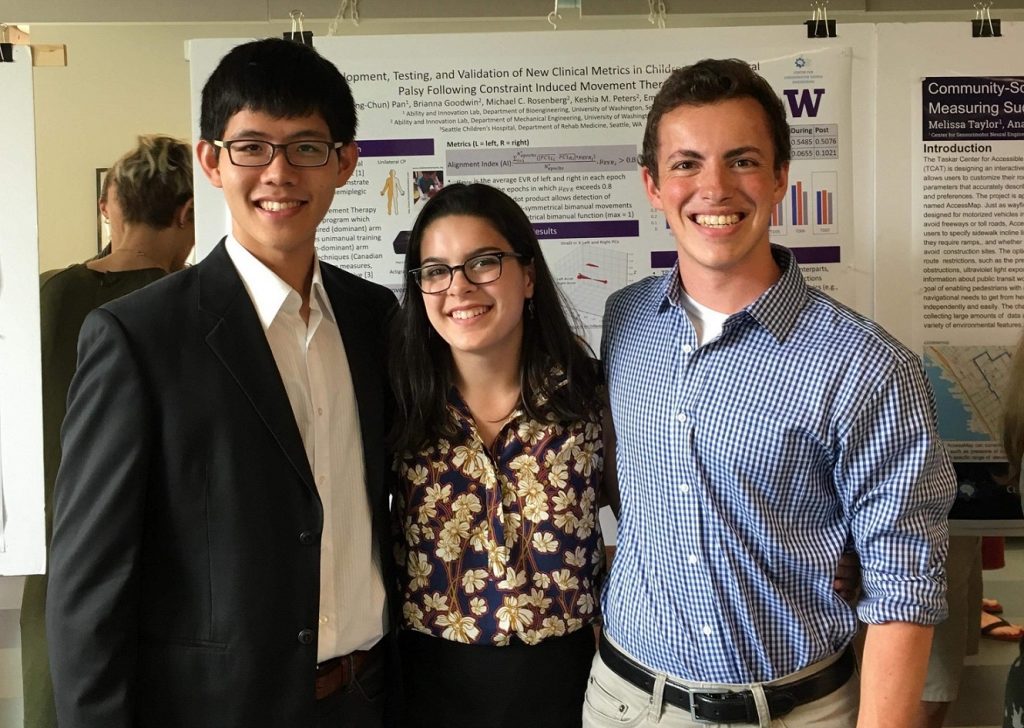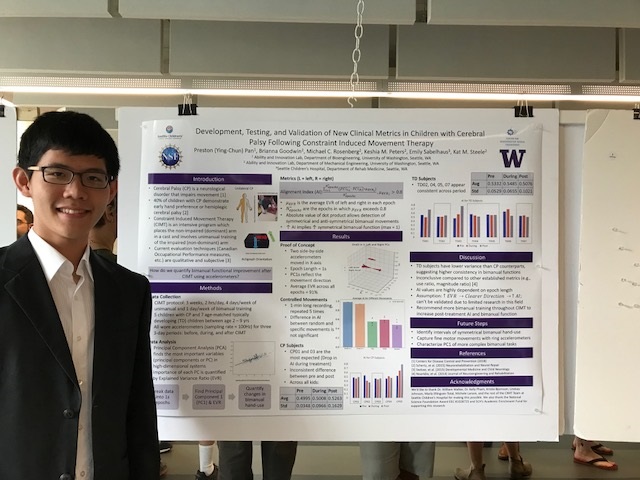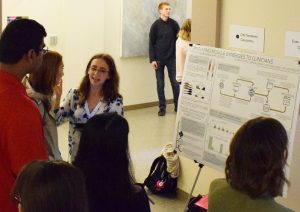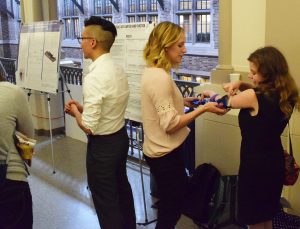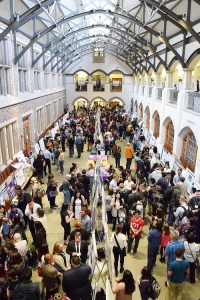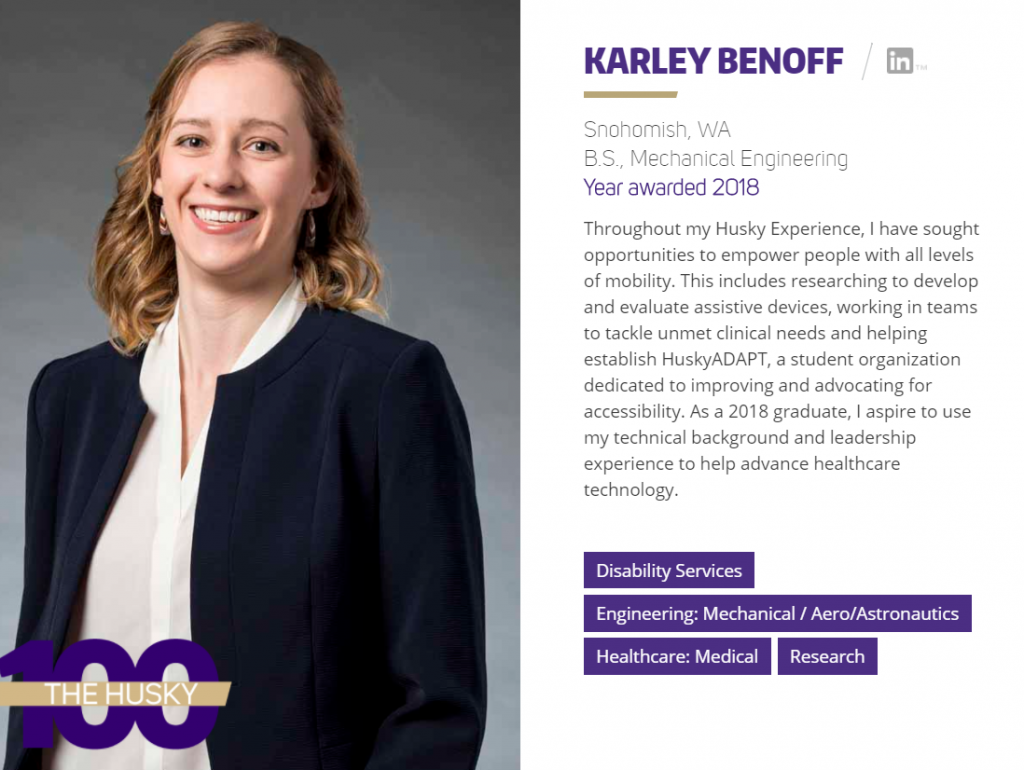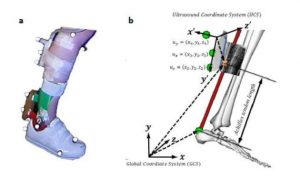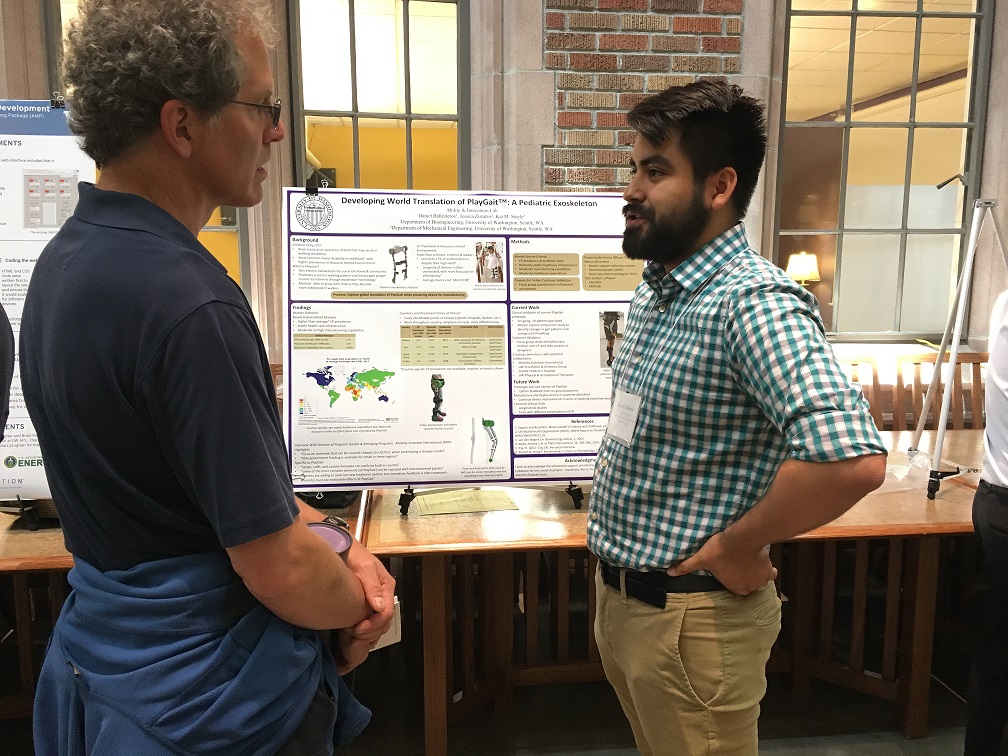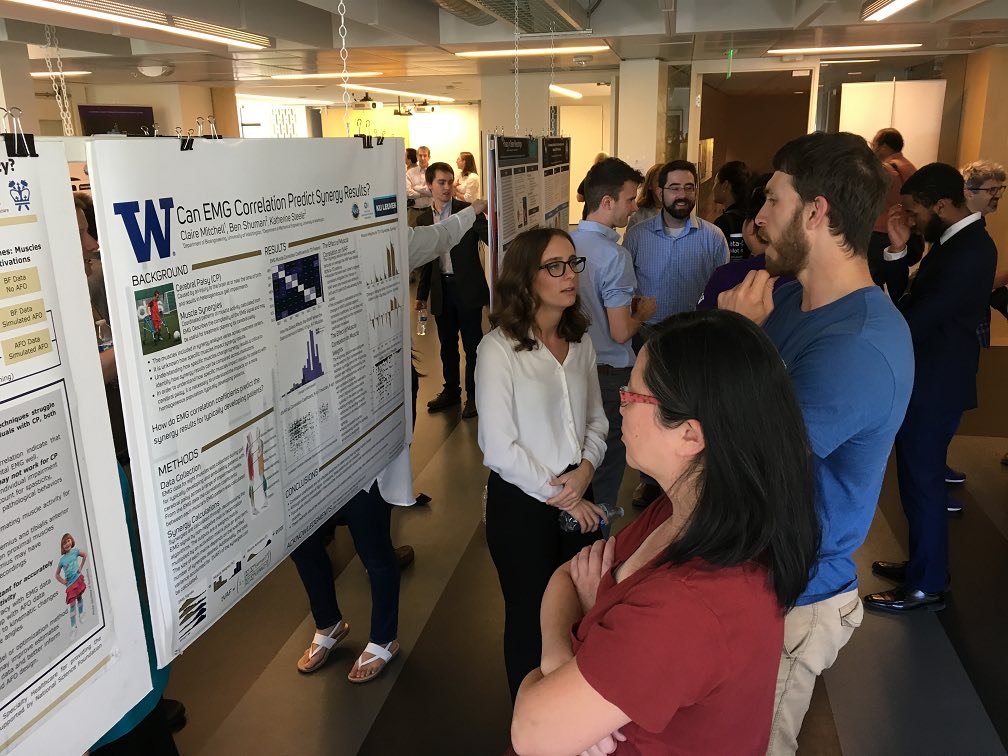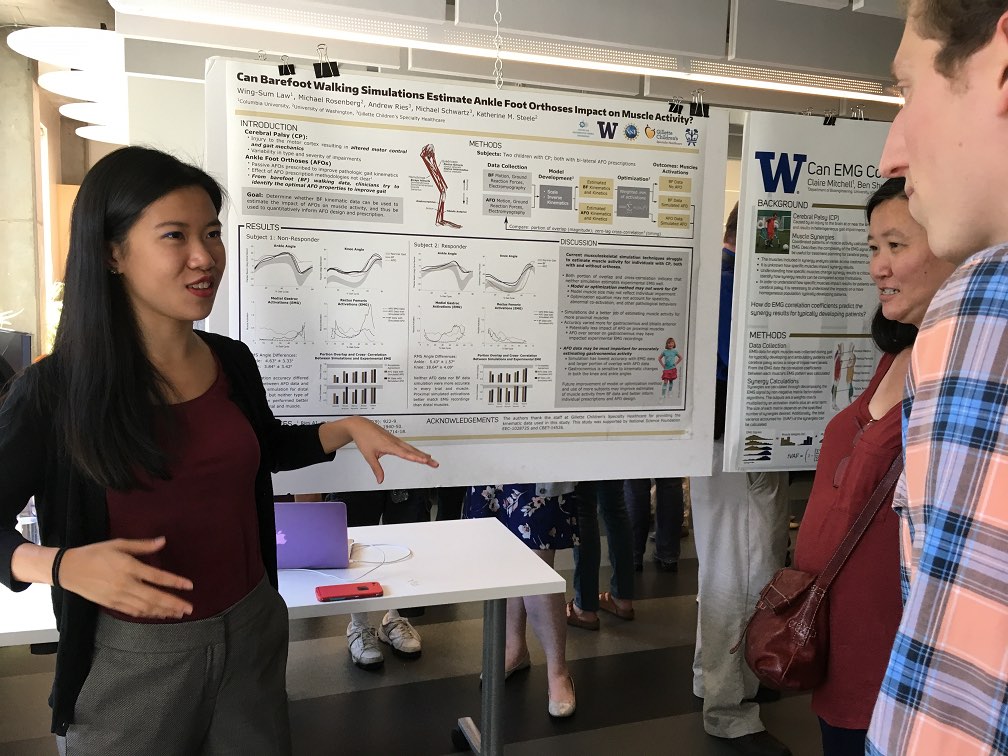This summer the Steele Lab had the pleasure of hosting three undergraduate researchers – Julia Costacurta from Johns Hopkins, Joe Lawler from the University of Washington, and Preston Pan from the University of Washington.
After a competitive selection process, students are offered a 10-week internship here at the University to work directly with a research lab on campus. One of the program’s final deliverables is a presentation of their work, both in podium and poster format, to members of the local and scientific community. Congratulations to Julia, Joe, and Preston for their successful time here in the lab, and for giving polished presentations.
Julia’s work explored the impacts of Ankle-Foot Orthoses on transient gait, a period of walking where little is currently known about device dynamics.
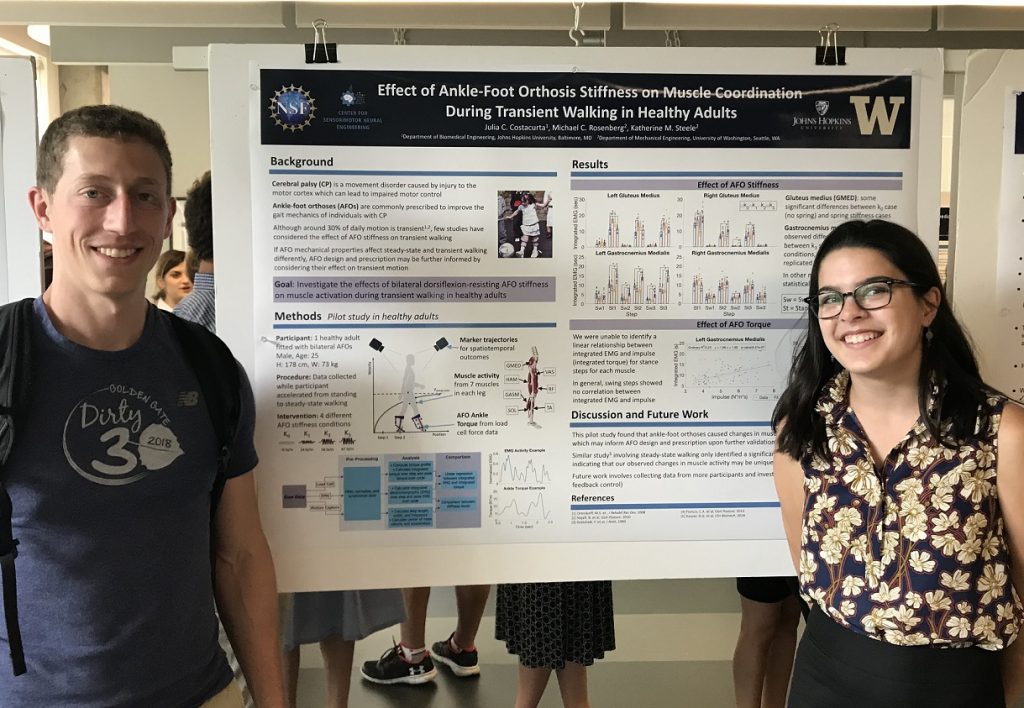 Preston worked directly with Seattle Children’s Hospital to implement algorithms for detecting bimanual hand movement before, during, and after a common therapy used to promote improved motor skills for children with hemiplegic cerebral palsy.
Preston worked directly with Seattle Children’s Hospital to implement algorithms for detecting bimanual hand movement before, during, and after a common therapy used to promote improved motor skills for children with hemiplegic cerebral palsy.
Joe’s focus this summer involved working with the University of Washington HuskyADAPT program. HuskyADAPT is a student-run program in its second year and stands for Accessible Design and Play Technology. Joe’s research question asked, how we can improve upon and further promote an inclusive and sustainable program for assistive technology?

